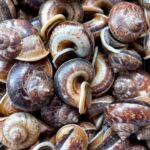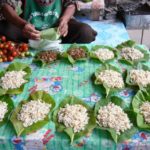In Thailand, both sea and freshwater fish are dried to increase their shelf life for later human consumption. Before the advent of refrigeration, the primary method for preventing spoilage was to salt the fish and then leave it in the sun until completely dry. Folk knowledge accumulated over centuries determined the amount of salt required to preserve each type of meat and the time needed for sun-drying.
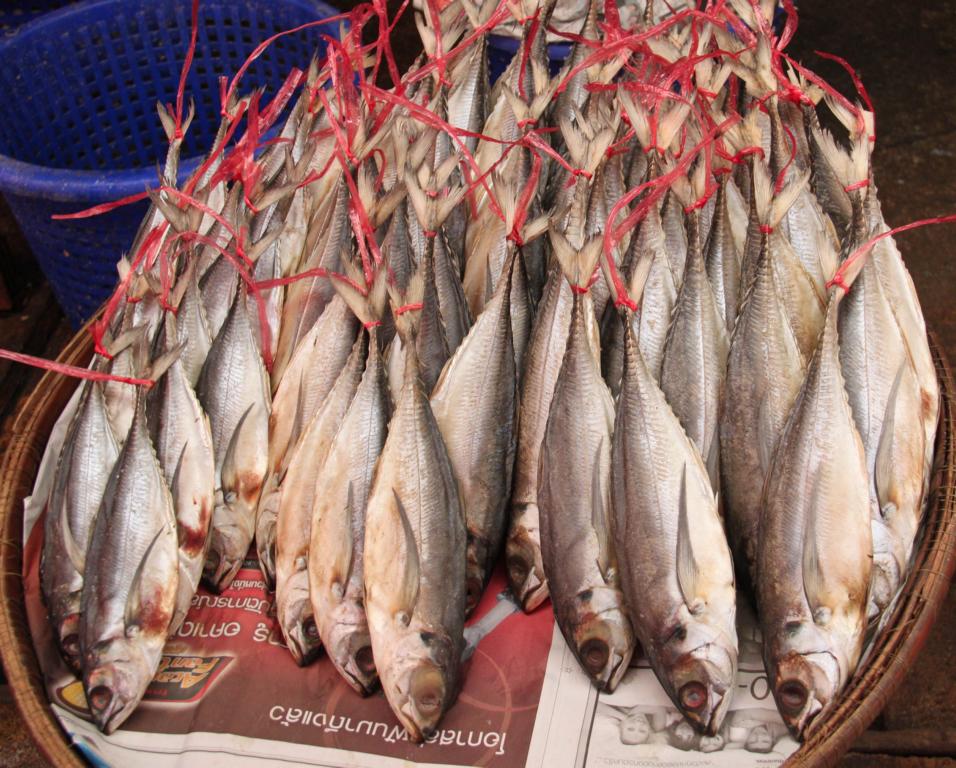

Small and medium-sized species, caught in limited quantities, are usually consumed fresh by individuals or restaurants. Large quantities and bigger species, which cannot be consumed or sold to intermediaries in one go, are refrigerated and, in the past, were also salted and dried. Traditionally, two different techniques were and continue to be used for salting and drying.
‘Slightly salted and semi-dry’ technique
The first technique, known as ‘Taak haeng daed dio’ (ตากแห้งแดดเดียว), involves rubbing the meat with a small amount of salt and sun-drying it for a brief period, typically just a few hours if the sun is intense. This method results in a rubbery texture of the meat that hinders quick spoilage, provides a chewable texture, and is not too salty for further cooking. This ‘Daed dio’ (แดดเดียว), meaning “sun-dried,” -method is commonly used to dry various species of freshwater fish, as well as pork, beef, squid, fruit, and herbs. For fish in the past, it was mainly used for snakehead fish (Channa striata) and various types of sheatfish (Pla Daeng, Siluridae sp., Catfish). Currently, it is widely used for Nile tilapia (Pla Nin, Oreochromis niloticus), as well as for sea fish such as mackerel and many others.
‘Crispy smoked fish’ technique.
Another technique for preserving fish for extended periods is to produce a unique aroma in the meat without requiring salt. This results in wholly dried fish known as ‘Plaa krawp rom khwan’ (ปลากรอบร่มควัน, Crispy smoked fish).
This method works best with fish that do not have scales. The process involves gutting the fish and then tying several of them together by running a splice of bamboo through their gills and mouths. The fish are then placed on a platform to dry in the sun for one day before being moved into a smoking room. Sawdust is used as fuel for the smoking fire, and the fish are smoked in the closed room for two or three days until completely dry. The reason why crispy smoked fish is so expensive is because only two kilograms of crispy dry fish can be produced from 10 kilograms of fresh fish.
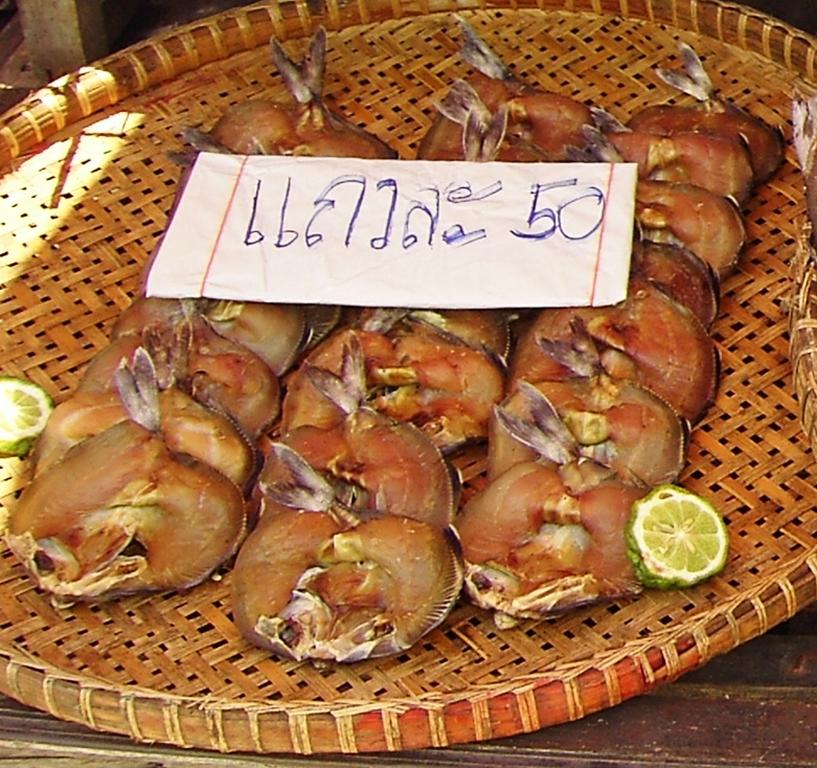

Other drying techniques
Small- and medium-sized sea fish caught in large numbers, such as mackerel, sardines, and others, are salted and either dried whole on racks or cut open along the spine with the guts removed except for the milk or egg sac. Large sea fish that cannot be sold or eaten immediately, such as billfish, sharks, and some tuna species, are cut into pieces and dried. Thai consumers prefer all these fish to be semi-dried, with the flesh still elastic when pressed with a finger.
Semi-dried Pla Nin (Nile tilapia, Oreochromis niloticus)
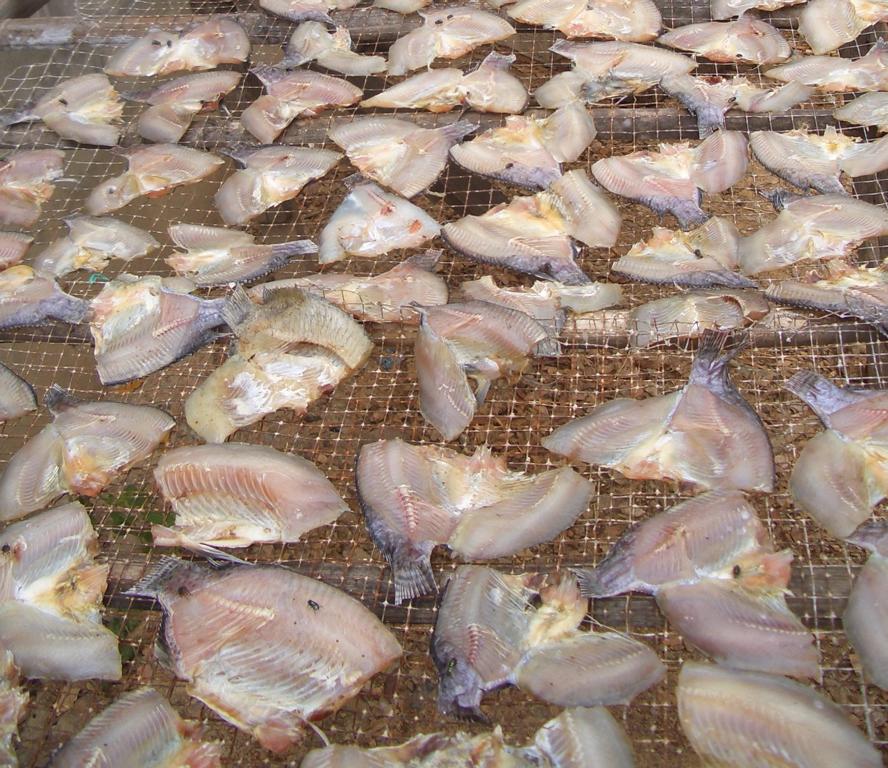

Every morning, small-scale farmers catch Pla Nin, remove the head and guts, and stack the fish on drying racks. Usually, in the late afternoon, this semi-dried fish is sold to private customers. Due to the high heat, the water in the meat evaporates quickly, resulting in fast drying. However, during the monsoon season from July to October, when humidity reaches 90 percent, drying may take longer.
Different styles of drying Pla Chon (Common Snakehead, Channa striata)
There are several ways that Pla Chon is prepared for drying. The first method involves drying the gutted fish as a whole.

Another version is to completely cut the fish along the spine, remove the guts, and make a second cut on the belly without severing the upper and lower portion of the flap. Then, the head is turned into the open belly flap, and the entire fish is completely dried. This results in a pretzel-like shape.
In another version, the fish is flapped along the spine, but instead of the belly portion, both side flaps are partially cut at the lateral line.
The last version involves flapping Pla Chon with the head removed. It is cut open at the lateral lines and between these lines and the belly portion. This results in five stripes of meat still held together by a portion of the tail section and the section behind the gills.
Therefore, as the saying goes, “There is more than one way to skin a cat.”
Lessons learned about dried fish:
- The primary method of drying fish in Thailand is to slightly salt fresh fish and dry them briefly in the sun.
- This semi-dried fish does not spoil easily, is not too salty for cooking, and has an easy-to-chew texture.
- Crispy smoked fish is completely dry, not salted, and has an attractive smoky smell and flavor.
- Snakehead fish, especially, are dried in various styles in upcountry areas.
.


